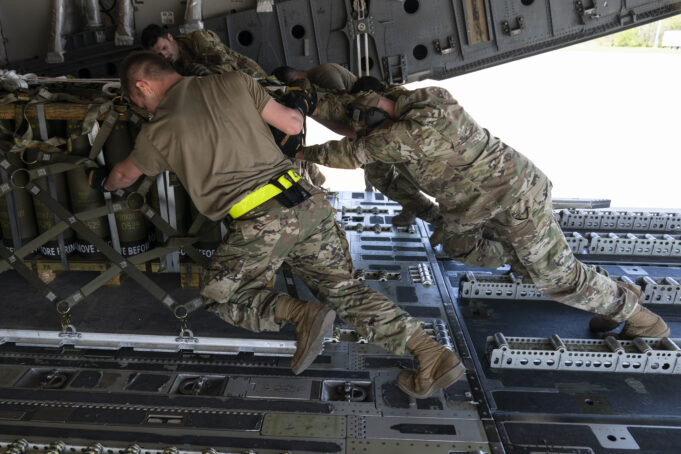For America, the world’s strongest military and economic power, there are dollars for death and destruction in Ukraine, but little or nothing for the poor, disenfranchised and weak at home.
“It’s part of the U.S. political classes commitment to U.S. power in the world. They have endless resources for that,” said Khury Petersen-Smith, the Michael Ratner Middle East Fellow at the Institute for Policy Studies in Washington, D.C.
Mr. Petersen-Smith sees a $40 billion package put together for Ukraine as wrongheaded. The congressional vote approving the billion dollar giveaway came the same week that more than one million people died due to covid in America. The grim number is the highest death total worldwide. In a virtual Global Covid Summit of G-7 nations, President Biden pledged $3 billion toward the global fight against the pestilence.
Two days after U.S. lawmakers overwhelmingly approved a $40 billion aid package loaded with military hardware for Ukraine, the top defense heads of the Russian Federation and the United States held direct phone talks May 13 as war raged between Russia and Ukraine, which is backed by America and Western European nations.
U.S. Secretary of Defense Lloyd J. Austin spoke with Russian Minister of Defense Sergey Shoygu for the first time since Feb. 18 prior to the Russian attack on Ukraine. A Department of Defense readout said Mr. Austin urged an immediate ceasefire and emphasized maintaining lines of communication. However, with unceasing conflict still raging and an intensified uptick of military support of Ukraine by America, requests for a peaceful settlement are virtually impossible.
It comes at a time that tension is spiraling toward a feared war of nations that the scriptures call Armageddon, and amid economic distress in America. In the face of the Ukraine package, Congress at Final Call presstime had declined to authorize billions of dollars in funding for the fight against the coronavirus and its impact.
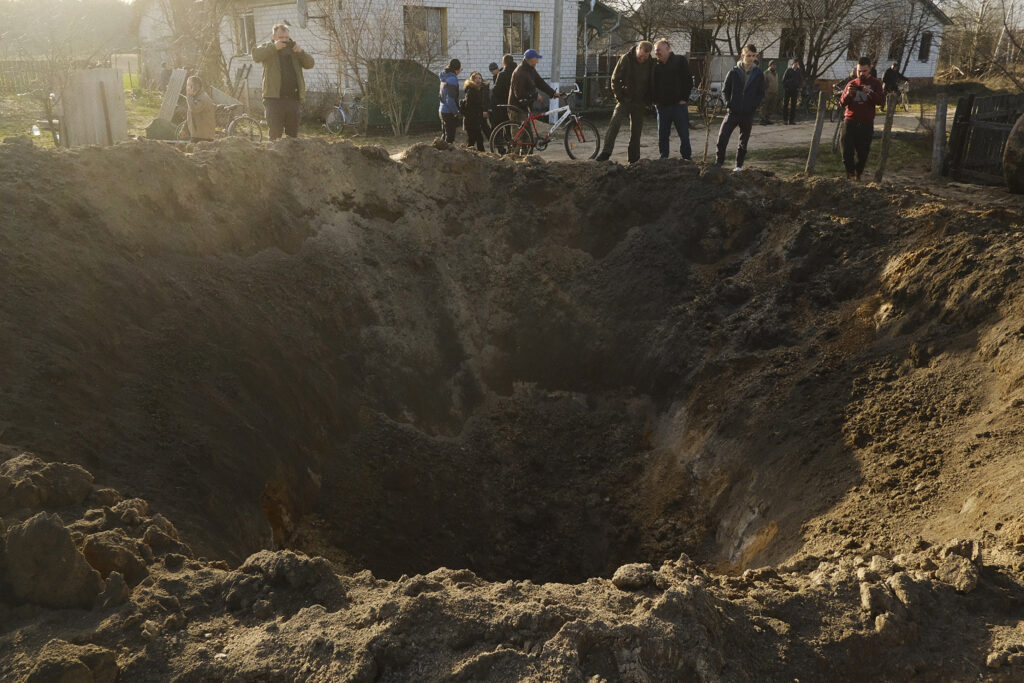
“The contrast is really clear, their commitment is to power, not to people here or anywhere,” said Mr. Petersen-Smith.
He added the $40 billion is an investment in refueling the present war and fuel for future war.
The bill gives Ukraine military and economic backing, helps regional allies, replenishes U.S. weapon stockpiles depleted from shipments to Ukraine and provides $5 billion toward global food shortages caused by the war’s paralyzing production of wheat and grain in the Eastern European nation.
Overwhelming bi-partisan funding approval May 10 was $7 billion above an initial $33 billion requested by President Biden. Although the House pushed the package through, it stalled briefly in the Senate as Kentucky Republican Rand Paul argued the aid almost equals the entire military budget of Russia, and the U.S. will have to borrow money from China to pay for it. Sen. Paul argued there are challenging domestic priorities to be met, like dealing with 40-year high inflation and gasoline prices hitting a 48 percent increase since 2020.
“My oath of office is to the U.S. Constitution, not to any foreign nation,” Sen. Paul tweeted May 13. “And no matter how sympathetic the cause, my oath of office is to the national security of the United States of America. We cannot save Ukraine by dooming the U.S. economy.”
The aid would bring U.S. support to nearly $54 billion, including the $13.6 billion Congress approved in March. That’s about $6 billion more than the U.S. spent on all its foreign and military aid in 2019, according to the Congressional Research Service.
Who benefits from the money?
The constant flow of aid to Ukraine is not charity, say critics of the ongoing war, the U.S. military industrial complex and defense contractors’ benefit. For the “big five” weapons companies, war is a bonanza as their stocks go through the roof, said Medea Benjamin, founder of the women’s pro-peace organization Code Pink.
The season of war is the financial harvest for the merchants of death who manufacture and sell missiles, deadly hardware and software. According to published reports, in calls with investors earlier this year, Raytheon and Lockheed Martin boasted that the worsening conflict in Europe was helping profits. Since Russia’s incursion into Ukraine, there have been incremental increases of war ware from America and western allies.
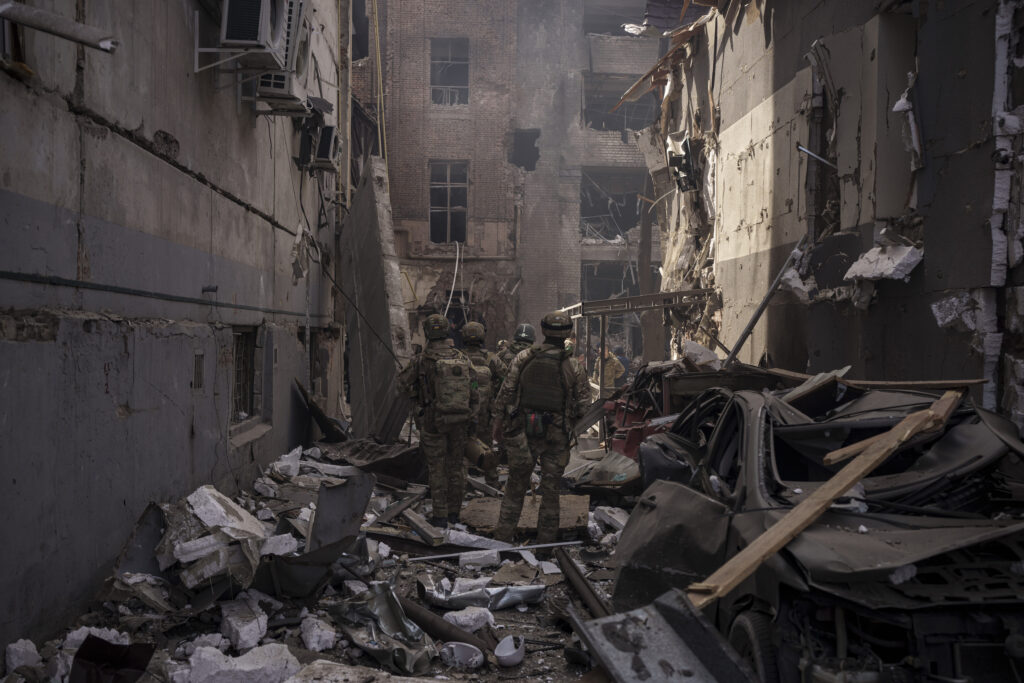
President Biden came under fire for lauding defense contractors’ production of war ware while visiting a Lockheed Martin facility on May 3. The company produces the Javelin anti-tank missiles which cost between $215,000 and $250,000 each. According to the White House, at Final Call presstime, America had sent more than 5,000 Javelin missiles to Ukraine.
The Congressional Research Service said Mr. Biden sent weaponry and equipment to Ukraine from U.S. stockpiles under the Presidential Drawdown Authority. The transfers will cost $5 billion to replace. Drawdown powers allow the president to authorize transfers of articles and services from U.S. stockpiles without congressional approval. Since August 2021, the Biden administration has authorized eight drawdowns valued at $3.31 billion.
Besides the whopping amount of U.S. dollars going into the military industrial complex, Ukraine has purchased firearms, ammunition, laser imaging, or guidance equipment directly from U.S. suppliers via the State Department Direct Commercial Sales Program.
As America invests in war, inflation is wreaking havoc on the home economy. Inflation reached a high of eight percent and increased consumer prices for gas and food are hurting Americans. Critics of U.S. involvement in the war argue whenever America “can’t afford” to do something at home, such as investing in the social needs of the poor, funding for war thousands of miles away is always available.
Ms. Benjamin sees the aid package as a down payment on World War III.
“I feel like we are careening towards a much broader war that would involve NATO countries, including, of course, the United States in a direct confrontation with the nuclear armed state of Russia,” Ms. Benjamin told The Final Call. “A war between the two countries, the U.S. and Russia, who have most of the world’s nuclear weapons is a recipe for total apocalypse.”
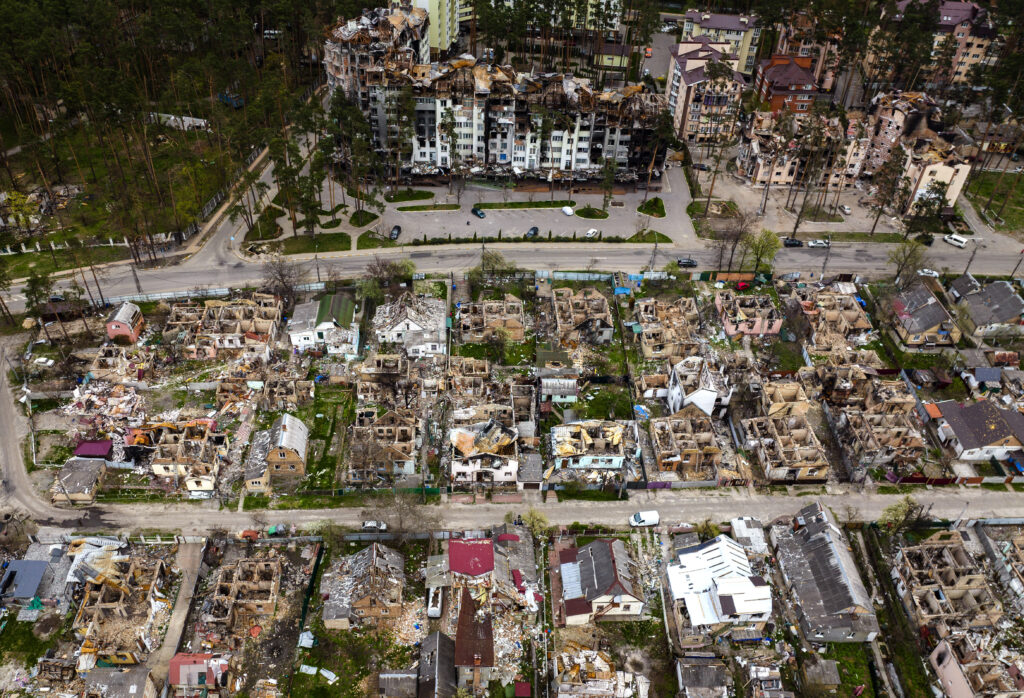
The poor have no voice
In Part 15 of his lecture series in 2013, “The Time and What Must Be Done,” the Honorable Minister Louis Farrakhan of the Nation of Islam said America has acted against the poor.
Biblical scripture says: “He sitteth in the lurking places of the villages: in the secret places doth he murder the innocent: his eyes are set against the poor.”
“It is sad that America’s concern for ‘the middle class’ and ‘the wealthy,’ and ‘the super-rich,’ does not come down to ‘the suffering working poor,’ and those who have no jobs, and no future. There are nearly 50 million Americans living in poverty: Where is their ‘voice’ in the Congress, when Congress is bowing to the industrialists, bowing to corporate America, bowing to those who would destroy ‘democracy?’ ” he asked.
“Where is the voice for the ‘little man,’ the ‘little woman?’ The little White man and woman that works hard; the little Brown man, the little Black man? The little Asian that works hard? Where is their ‘voice’ today?” Minister Farrakhan continued.
“Their lands and seas are filled with deadly weapons of war; their islands of the sea are afloat with corruption by all the nations of earth, for they are proud and boastful and [are now hated and] despised according to their wishes. … They command the sea with their powerful navies, parking them off the shores of other nations—as they are doing now in Asia; as they’ve done in the Gulf of Sirte, or Sidra, in the Mediterranean, and as they are doing in other parts of the world.
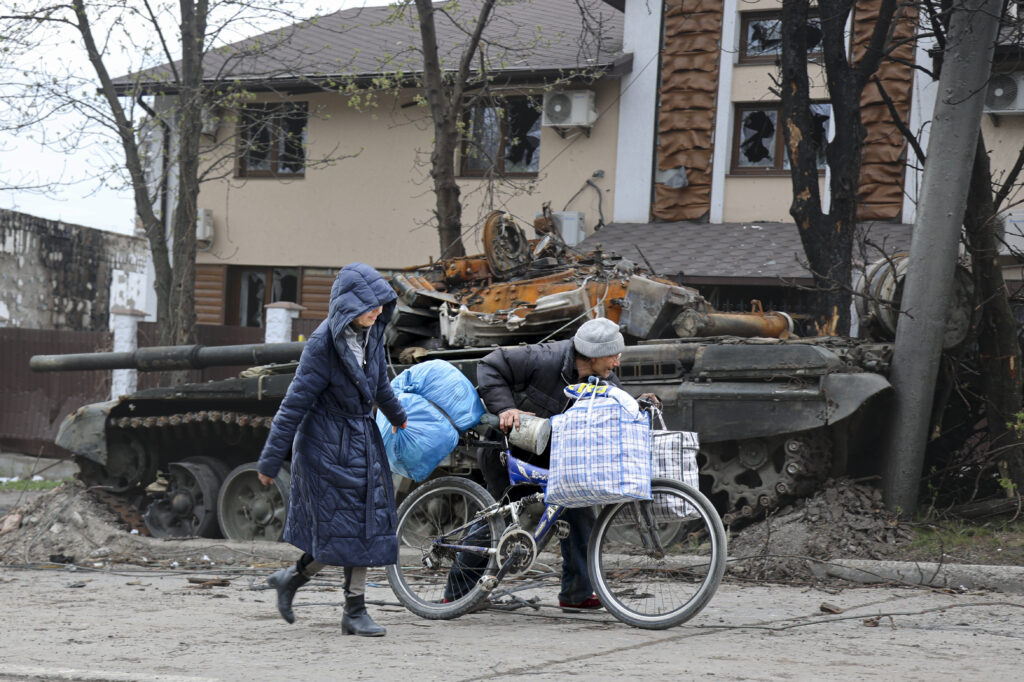
“They secure air bases on their soils to place their deadly bomb-carrying planes within easy striking distances of those whom they fear to be their enemies. Is this not the easy way to make more enemies?” asked Minister Farrakhan.
Pro-peace advocates said the high price paid by America for war abroad could be better spent solving domestic problems in a country facing multiple crises. Supply chain issues stemming from the two-year covid pestilence stalling the global economy is taking its toll and compounding the war’s impacts with soaring gas and grocery prices.
The Ukraine bill received 100 percent support from voting Democrats and nearly 75 percent of Republicans. Among the yes votes were Black lawmakers who were among the most vocal for sending resources to Ukraine.
For some anti-war activists support for $40 billion to Ukraine while many Blacks live in underserved, war-like zones in cities, without allocating resources for peace here, is outrageous.
“There’s really no skin in the game for people of color or for poor people,” said Tighe Barry, anti-war activist in a telephone interview with The Final Call. “The only reason that African American folk or poor folk, in general, support this war is because they’ve been propagandized over and over and over,” he added, referring to U.S. corporate media coverage of the war.
Supplying Ukraine high-powered missiles, equipment and war ware from America and European allies is seen by Russia as meddling and dangerous provocation. Former Russian President Dmitry Medvedev, now deputy chairman of Russia’s security council, warned increasing military support to Ukraine risks sparking direct conflict between Russia and the NATO military alliance.
Some observers and Russian officials say the Ukraine conflict is really a U.S.-NATO proxy war against Russia. Mr. Medvedev said May 12, “NATO countries pumping weapons into Ukraine, training troops to use Western equipment, sending in mercenaries and the exercises of Alliance countries near our borders increase the likelihood of a direct and open conflict between NATO and Russia.”
“Such a conflict always has the risk of turning into a full-fledged nuclear war,” he said in a post on the Telegram platform. “This will be a disastrous scenario for everyone.”
Ms. Benjamin said the U.S. package would cover several months, then the Ukrainians would ask for more. She is not optimistic the aid package will help Ukraine. Instead it will prolong war, she predicted.
“We should ask every single one of those representatives who voted for this: What is their plan for negotiations? How are they contributing to ending this war? Because I haven’t seen a plan from any of them. Just pouring more weapons into this conflict without a peace plan is unconscionable,” said Ms. Benjamin.












